What Causes Cystitis of the Bladder?
Most cases of cystitis and interstitial cystitis will occur when bacteria enters the body and infects the lining of the bladder. Escherichia coli (E. coli) is the bacteria mostly responsible for bladder infections.
Besides bacterial infections, there are other causes of cystitis and bladder pain for example:
- Sensitivity to chemicals: Some people may develop an allergic reaction in the bladder when exposed to certain chemicals in products, feminine hygiene sprays, or bubble baths.
- Certain medications: There are several allopathic drugs thought to induce cystitis, such as chemotherapy and frequent use of antibiotics. Radiation treatment can also cause bladder problems.
- Other causes of cystitis: Cystitis may also be caused by an enlarged prostate, kidney stones, diabetes, spinal cord injuries, use of a diaphragm for birth control, bladder cancer, sexual intercourse, stress, poor diet, food allergies, and hormonal imbalances (during menopause or pregnancy).
Differentiation Cystitis of the Bladder
How do you know if your patient has cystitis or cystitis of the bladder ?
- An increased and persistent urge to urinate
- A burning pain from urination
- Foul-smelling or dark-colored and cloudy urine
- Frequently passing small amounts of urine
- Chronic pelvic discomfort
- Lower abdominal pain
- Lower back pain
- Traces of blood in the urine
- Weakness and a low-grade fever, especially among older women who also don’t show signs of other symptoms
How Cystitis of Bladder Is Diagnosed
Although a diagnosis of cystitis of the bladder is made according to a patient’s signs, symptoms and certain tests for example:
Urinalysis (help determine if there is pus, blood, or bacteria in urine), and a microscopic examination may reveal high levels of E. coli and white blood cells.
Ultrasound or X-ray is sometimes used to discover other bladder inflammation causes like a structural abnormality or a tumor. Sometimes a cystoscopy is used, especially when patient experienced symptoms for a long period of time.
P.S: Interstitial cystitis, can be harder to diagnose due to symptoms overlapping with other conditions such as an overactive bladder, vulvodynia, chronic pelvic pain, a UTI, and endometriosis.
That’s why interstitial cystitis is sometimes not accurately diagnosed until five years after first showing signs of symptoms.
Allopathic treatment for Cystitis of the bladder
Cystitis caused by bacterial infection is generally treated with antibiotics. Treatment for other types of cystitis depends on what’s causing it.
Allopathically treating bacterial cystitis
Antibiotics are the first line of treatment for cystitis caused by bacteria. Which drugs are used and for how long depends on your overall health and the bacteria found in the urine.
- First-time infection. Symptoms often improve a lot within the first few days of taking antibiotics. But you’ll likely need to take antibiotics for three days to a week, depending on how severe your infection is.
Take the pills exactly as directed by your provider. Don’t stop the pills early, even if you’re feeling better. This helps make sure that the infection is completely gone.
- Repeat infection. If you have recurrent UTIs, your provider may have you take antibiotics for a longer period of time. You may also be referred to a doctor who specializes in urinary tract disorders (urologist or nephrologist). A specialist can check for any urologic problems that may be causing the infections. In some cases, taking a single dose of an antibiotic after sex may be helpful for repeat infections.
- Hospital-acquired infection. Hospital-acquired bladder infections can be a challenge to treat. That’s because bacteria found in hospitals are often resistant to the common types of antibiotics used to treat community-acquired bladder infections. Different types of antibiotics and different treatment approaches may be needed.
Women who have gone through menopause may be particularly at risk of cystitis. As a part of treatment, your provider may give you a vaginal estrogen cream. But vaginal estrogen is recommended only if you’re able to use this medicine without increasing your risk of other health problems.
Allopathically treating interstitial cystitis
There’s no single treatment that works best for someone with interstitial cystitis. The cause of inflammation is uncertain. To relieve symptoms, you might need medication given as a pill you take by mouth. Medicine can also be placed directly into the bladder through a tube. Or you might have a procedure called nerve stimulation. This uses mild electrical pulses to relieve pelvic pain and urinary frequency.
Surgery is a last resort option, to be considered only when other treatments fail. Surgery might not work to relieve pain and other symptoms.
Allopathically treating other forms of noninfectious cystitis
Some people are sensitive to chemicals in products such as bubble bath or spermicide. Avoiding these products may help ease symptoms and prevent more episodes of cystitis. Drinking plenty of fluids also helps to flush out substances that may be irritating the bladder.
For cystitis that develops as a complication of chemotherapy or radiation therapy, treatment focuses on managing pain by taking medicine.
Some Natural medicines for Cystitis of the Bladder
The following natural approaches to cystitis are considered best.
1. Cranberry
The use of cranberry for urinary conditions can be traced back to Native American tribes. Cranberry juice and cranberry powder extract are both thought to prevent E. coli and other bacteria from sticking to the bladder wall. Cranberry can prevent UTIs and treat acute cystitis.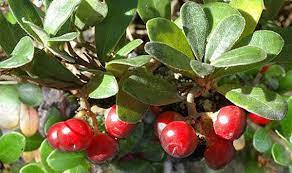
2. Uva Ursi or Wild Cranberry
For centuries, uva ursi has been a popular herbal remedy for treating bladder infections like cystitis. The active compound in uva ursi is arbutin. Some studies show that uva ursi can prevent frequent UTIs when combined with dandelion leaf and root.
3. Probiotics
If you are using antibiotics, probiotics are especially useful in preventing the overgrowth of harmful bacteria. Antibiotics are known to kill all the bacteria in your system, which also includes the good stuff. In a 2009 systematic review of five studies, probiotics with Lactobacillus strains helped prevent UTIs.
4. Goldenseal
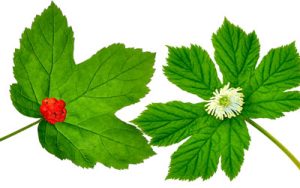 Goldenseal has a long history for treating infections and E. coli. It can boost the immune system, and it contains a potent alkaloid called berberine. Some studies support goldenseal in the treatment of urinary conditions.
Goldenseal has a long history for treating infections and E. coli. It can boost the immune system, and it contains a potent alkaloid called berberine. Some studies support goldenseal in the treatment of urinary conditions.
5. Antioxidants
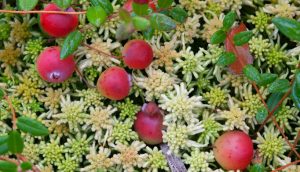
D-mannose is a simple sugar found in fruits such as apples, blueberries, and cranberries, and it’s not broken down in the blood. It’s also highly concentrated in the bladder, where it prevents E. coli or other bacteria from bonding to the bladder wall.
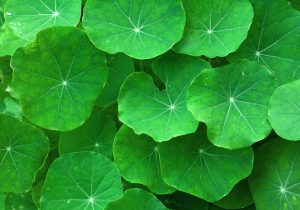
Gotu kola extracts have been found to treat bladder ulcerations, while improving the integrity of the bladder lining.
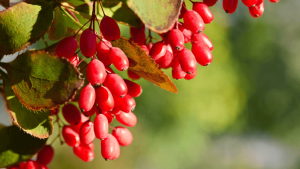
As mentioned, berberine is useful in treating cystitis. Some studies have found that berberine can inhibit the bond of E. coli to epithelial cells. Besides goldenseal, other plants with berberine include Oregon grape, bayberry, tree turmeric, and coptis.
Other Natural Remedies
Other natural treatments for cystitis include Echinacea, horsetail, oil of oregano, magnesium, vitamin D3, fish oils, grape seed extract, pine bark extract, parsley water, horseradish, and celery seeds. Other therapies for cystitis also include acupuncture, yoga, and other mindfulness techniques.
Homoeopathic medicines for Cystitis of the Bladder
Cantharis
Cantharis is a well known homoeopathic remedy for its marvelous effects on inflammations and infections. In cases of burns, it brings immediate relief.
It is ideal for cases with symptoms of inflammation of the bladder with pain and a lot of burning in the genitals. The urine passed drop by drop, excessive burning while passing urine. There is retention of urine but the person feels the need to pass urine frequently; the reason for this is the incomplete clearance of the bladder. There is an intolerable urge to urinate that makes the person go into paroxysms. It can be used in cases of Interstitial cystitis where the root cause is chronic inflamed bladder.
Apis Mellifica
Apis Mellifica Is an excellent remedy used in homoeopathy in cases of chronic inflammation of bladder as well as Interstitial Cystitis. Apis helps to cure the inflamed part and reduce the swelling.
Hot urine passed drop by drop owing to the burning that corrodes the skin and makes it difficult to urinate. The urine in these cases is of a strong color and odor, incomplete urination gives rise to a constant urge to urinate. In cases of urine troubles with swelling in the genitals, retention of urine in infants.
In youngsters, it can be used in cases where kidney inflammations have caused cystitis. The kid is scared to pass urine due to the burning pain it causes.
Equisetum
Slight or dull pain in right kidney then in left – extending down left side of sacrum, with urgent desire to urinate; had urinated only a few minutes before and now passed four ounces of clear light-coloured urine.
Pain in bladder as from distension, severe dull pain in bladder not by urinating; continued some days after taking the allopathic drug, and caused him to fear inflammation of the bladder.
Tenderness in region of bladder and lower abdomen, extending upward from groin; Pain and tenderness in bladder region with soreness of testicles, extending up spermatic cords.
Excessive burning in urethra while urinating, Sharp cutting pain in urethra, Pricking in urethra a short distance back from meatus, Biting itching in meatus scratching, Great desire to urinate but only a small quantity passes, Urgent desire to urinate with prickling and soreness of meatus from contact and pressure, Obliged to rise several times at night to urinate, Profuse urination, with burning in urethra and sharp pain at root of penis, Later passes smaller quantities and darker.
Urine cloudy, Great excess of mucus on standing. Enuresis, nocturnal and diurnal.
Mercurius corrosivus
Tenesmus of bladder; suppressed urine. Increased discharge of urine, passed in drops, and with great pain. Urine scanty, brown, with brick-dust like sediment; bloody; albuminous containing filaments, flocks or dark flesh-like pieces of mucus, epithelial cells of tubuli uriniferi in a state of fatty degeneration.
Gonorrhea discharges, first thin, then thicker (greenish, better at night), and then smarting pain when urinating, with stitches in urethra. Burning in urethra, more before micturition. Paraphimosis.
Petroselinum (Parsley)
Sudden urging to urinate. Patient suddenly seized with desire to urinate; if not gratified immediately, jumps up and down with pain. Severe pain when he passes urine as to cause him to shiver and dance round room in agony.
Discharge of a milky fluid from urethra; Albuminous yellow discharge from urethra; gonorrhoea.
Orifice of urethra agglutinated with mucus. Creeping and crawling throughout whole length of urethra. Frequent and almost fruitless want to urinate, every half-hour.
Tingling, lancinating, pressure and drawing, in urethra. Crawling and pressure in region of Cowper’s glands in morning in bed, > while standing and sitting. During micturition, burning and tingling from perineum through the whole urethra. Drawing, afterwards itching in fossa navicularis; burning in navicular fossa while urinating. Frequent desire to urinate, caused by crawling stitch behind navicular fossa. Frequent voluptuous tickling in navicular fossa.
Staphysagria
Itching, needle like stitches in region of kidneys. Pressure on bladder on waking from sleep.
Frequent want to urinate, with emission drop by drop, or else of a slender stream of deep-coloured urine; excessively painful emission of urine.
Frequent (profuse) emission of clear watery urine (with much urging).
Frequent emission of red urine. Constant micturition at night. Bloody urine. Involuntary emission of urine when coughing.
After having urinated, a fresh want is felt, as if bladder were again full. Burning sensation in urethra, especially (after and) when urinating (with urging, as if the bladder were not emptied).
Constant urging in young married women.
Asenicum Album
Retention of urine, as from paralysis of the bladder.-Frequent inclination to make water, even at night, with abundant emission.-Incontinence of urine, which escapes almost involuntarily, even at night, in bed.-Difficult and painful emission of urine.-Scanty urine, of a deep yellow colour.-Urine aqueous, greenish, brownish, or turbid, with mucus-like sediment.-Sanguineous urine.-Burning in the urethra on making water.-Involuntary discharge of burning urine.
Berberis Vulgaris for Cystitis of the Bladder
Violent sticting pains in the bladder, extending from the kidneys into the urethra, with urging to urinate. Frequently recurring, crampy, contractive pain, or aching pain, in the bladder, when the bladder is full or empty – Incisive pains in the urethra, smarting pain in the urethra, with sensation of excoriation, even during the emission of semen in coition.
Motion excites and aggravates the pains in the urethra. Burning pains in the urethra while urinating, and afterwards. Stitches and burning in the urethra.
Shooting pains in the urethra, extending to the bladder. Aching pains in the region of the bladder, even when it is empty, and after making water. Contractive, drawing, acute, incisive, and cramp like pains in the bladder.
Shooting, violent pains in the loins, extending to the bladder. Sensation of burning in the bladder. Increased secretion of urine, which is as clear as water, sometimes urine pale yellowish, with slimy, gelatinous, mealy sediment, white, greyish white, or reddish.
Urine thick, yellowish, like whey, or clay coloured water. Urine of a deep yellow, with abundant sediment. Urine dark yellow, red, becoming turbid, copious; mucous sediment, or transparent, jelly-like reddish, bran-like sediment (which is easily crushed and dissolved between the fingers). Greenish urine, depositing mucus. Urine reddish, as if inflamed, with abundant sediment.
Apis Melifistida
Burning soreness when urinating, strangury, Pain in region of kidneys; soreness on pressure or when stooping. Frequent desire, with passage of only a few drops.
Urine scanty and high coloured; with thirstlessness. Incontinence of urine from coughing and other circumstances. Urine suppressed. Too profuse discharge of urine.
Albuminuria of scarlatina. Burning and stinging in the urethra. Burning and smarting in the urethra, as if it were scalded. Bladder very painful, often tenesmus after urinating.-Urine often milky appearance; very dark and frothy; very fetid; sediment reddish-brown, like coffee grounds.
Aconitum Napellus for Cystitis of the Bladder
Suppression of urine, with pressure in the bladder and pains in the loins. A frequent desire to discharge urine, accompanied by anxiety and pain. Flow of urine, with sweat, diarrhoea, and colic. Involuntary emission of urine, from relaxation of the neck of the bladder.
Enuresis, with thirst. Urine scanty, burning, deep red, and with a sediment of a brick colour (arising from taking cold, esp. in children); suppression of, from cold. Bloody sediment in the urine, Scanty, red, hot urine, without sediment. Heat and tenesmus in the neck of the bladder.
Sarsaparilla
Sarsaparilla is necessary for severe urethra pain at the end of urination. The urethra pain will also radiate up into the abdomen area, and it is also hard for the person to urinate unless they are standing. Urination will flow easily at night, possibly when the person experiences bedwetting. When sitting, urine will dribble. Scanty, slimy, or bloody urine are also common features of someone requiring sarsaparilla.
P. S : This article is only for doctors having good knowledge about Homeopathy and allopathy, for learning purpose(s).
For proper consultation and treatment, please visit our clinic.
Location, address and contact numbers are given below.
NoN of above mentioned medicine(s) is/are the full/complete treatment, but just hints for treatment; every patient has his/her own constitutional medicine.
To order medicine by courier, please send your details at WhatsApp– +923119884588
 Dr. Sayyad Qaisar Ahmed (MD {Ukraine}, DHMS), Abdominal Surgeries, Oncological surgeries, Gastroenterologist, Specialist Homeopathic Medicines.
Dr. Sayyad Qaisar Ahmed (MD {Ukraine}, DHMS), Abdominal Surgeries, Oncological surgeries, Gastroenterologist, Specialist Homeopathic Medicines.
Senior research officer at Dnepropetrovsk state medical academy Ukraine.
Location: Al-Haytham clinic, Umer Farooq Chowk Risalpur Sadder (0923631023, 03119884588), K.P.K, Pakistan.
Find more about Dr Sayed Qaisar Ahmed at :
https://www.youtube.com/Dr Qaisar Ahmed
https://www.facebook.com/dr.qaisar.dixecosmetics
https://www.dixecosmetics.com/
